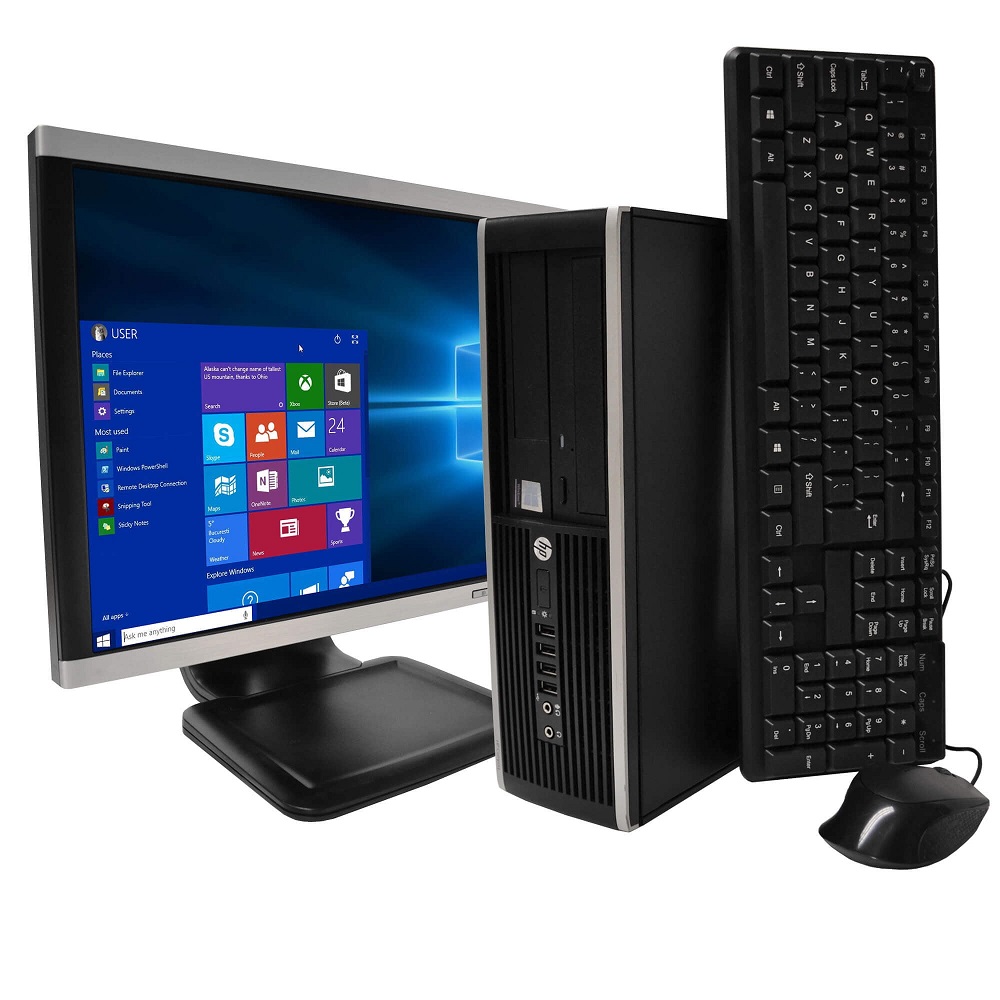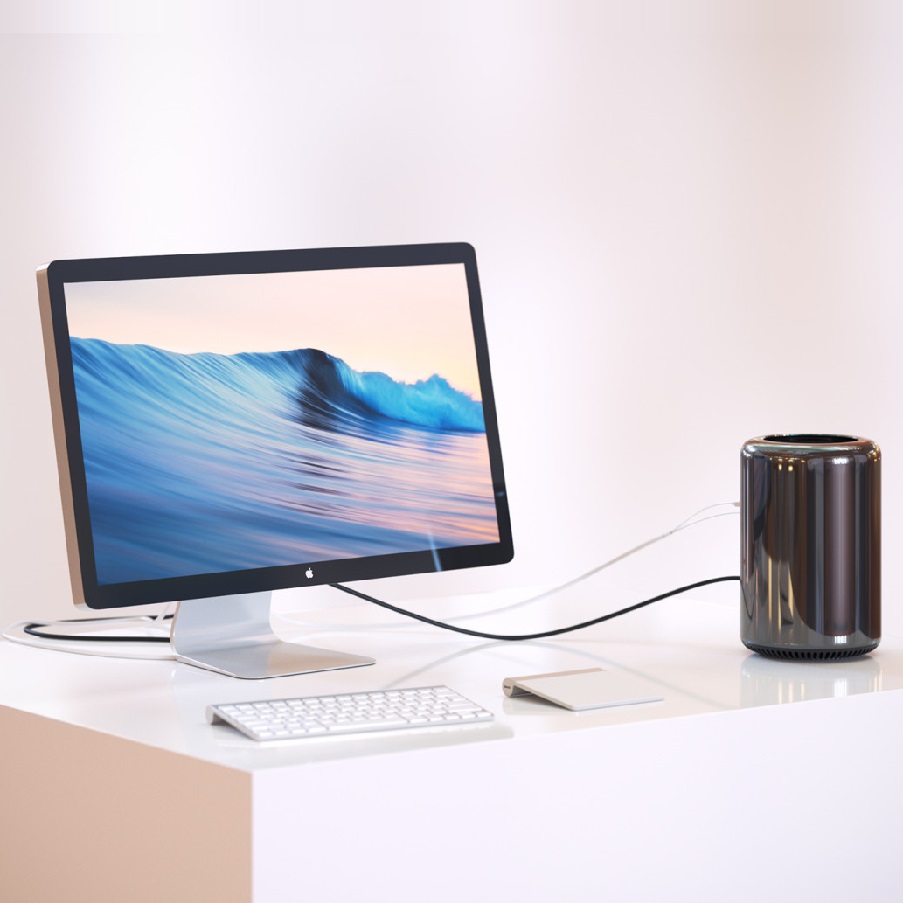Personal computers (PCs) are common in households, offices, and educational institutions around the globe. However, their complexity and versatility often lead to a varied understanding of what a personal computer truly is. This article aims to provide a comprehensive definition of personal computers by exploring their components, history, uses, and future trends.
The Basic Definition of a Personal Computer
What Constitutes a Personal Computer?
A personal computer is a general-purpose computer designed for use by one person at a time. It is intended to be operated directly by an end-user, with no intervening computer operator. PCs differ from large-scale computing resources such as time-sharing mainframes and servers, which are designed to provide computing power and storage to multiple users simultaneously or in batch mode.
Components of a Personal Computer
A personal computer typically consists of both hardware and software components. The primary hardware in a PC includes a central processing unit (CPU), random access memory (RAM), storage devices like hard drives or solid-state drives, a motherboard, power supply unit, and peripheral devices like keyboards, mice, and monitors.
On the software side, personal computers run operating systems such as Windows, macOS, and Linux, which manage hardware resources and provide user interfaces. Applications software like word processors, web browsers, and games allow users to perform specific tasks.
Types of Personal Computers
Personal computers come in various forms and sizes to meet different needs and preferences. The most common types are desktops, laptops, and tablets. Desktops are usually bulky and designed to remain stationary, whereas laptops are portable and include built-in screens and keyboards. Tablets are mobile devices that rely on touchscreens for input.
Historical Evolution of the Personal Computer
Early Beginnings
The concept of a personal computer wasn’t always as it is today. The development of personal computers began in earnest in the 1970s, with early models like the Altair 8800, introduced in 1975. It was initially targeted at hobbyists and engineers because it required assembly and programming skills.
The Advent of Mass-Produced PCs
The launch of Apple’s Apple II in 1977 marked a significant turning point. It was one of the first highly successful mass-produced personal computers. The IBM PC, introduced in 1981, set a standard for personal computer hardware, becoming the most widely adopted architecture.
Software Development and User Interface
The progression of software also played a vital role in the popularization of personal computers. Early PCs operated on command-based interfaces that required users to type text commands. This changed with the introduction of graphical user interfaces (GUIs), which provided more intuitive ways to interact with computers. Notably, Windows 3.0, released in 1990, became a key software platform for personal computers due to its graphical interface and multitasking capabilities.
Modern Uses of Personal Computers
Home Use
In the home, personal computers are versatile tools for various tasks. These tasks include internet browsing, streaming media, gaming, personal finance management, and educational activities. PCs have also become essential for home offices and remote work, further increasing their importance in modern households.
Professional Use
In professional settings, personal computers are indispensable. They are used for tasks ranging from data entry and word processing to software development and digital design. Industries such as healthcare, engineering, and graphic design rely heavily on specialized computer applications to perform complex functions.
Educational Use
Personal computers play a vital role in education. They provide access to information, educational software, and tools for creating and sharing educational materials. PCs have become ubiquitous in classrooms, libraries, and student dormitories, supporting learning and research activities at all levels of education.
Entertainment and Gaming
The gaming industry represents one of the largest markets for personal computers. Modern PCs are equipped with powerful graphics cards, high-speed processors, and ample memory, making them capable of running the latest video games. In addition to games, PCs also provide platforms for music production, video editing, and other forms of digital entertainment.
Key Components of a Personal Computer
Central Processing Unit (CPU)
The CPU, commonly referred to as the brain of the computer, performs most of the processing inside a PC. It interprets and executes instructions from applications and the operating system. Modern CPUs are multi-core, meaning they can process multiple tasks simultaneously, enhancing performance and efficiency.
Memory (RAM)
Random Access Memory (RAM) is crucial for temporary data storage. RAM allows the CPU to quickly access data, running applications, and performing tasks without delay. The amount of RAM in a computer significantly impacts its ability to handle multitasking and run resource-intensive programs.
Storage Devices
Personal computers use various types of storage devices to store data permanently or semi-permanently. These include Hard Disk Drives (HDDs) and Solid-State Drives (SSDs). HDDs offer higher storage capacity at a lower cost, while SSDs provide faster data access speeds and greater durability.
Motherboard
The motherboard is the main circuit board in a computer. It connects all the hardware components, allowing them to communicate with each other. It houses the CPU, RAM, storage connectors, and expansion slots for GPUs, sound cards, and other peripherals.
Power Supply Unit (PSU) and Cooling System
The power supply unit converts electrical energy from an outlet into usable power for the computer components. It is a critical component ensuring the stability and longevity of the PC. Alongside it, the cooling system, which includes fans and heat sinks, maintains optimal operating temperatures for the computer’s components.
Peripherals and Accessories
Input Devices
Input devices such as keyboards and mice are essential peripherals that allow users to interact with their personal computers. Modern alternatives include touchpads, graphic tablets, and voice recognition systems, each offering different input methods catering to various use cases.
Output Devices
Monitors and printers are the most common output devices in personal computing. Monitors display visual output from the computer, while printers produce hard copies of digital documents. Advanced users may also use additional devices like projectors and VR headsets for specialized tasks.
Networking Components
Networking components like modems, routers, and network interface cards (NICs) facilitate internet access and local network connectivity. These devices enable personal computers to communicate with other computers and devices, share resources, and access online services.
The Software Ecosystem
Operating Systems
The operating system (OS) is fundamental to a personal computer’s functionality. It manages hardware resources, provides user interfaces, and serves as a platform for running applications. Common operating systems for personal computers include Microsoft Windows, Apple’s macOS, and Linux distributions like Ubuntu and Fedora.
Application Software
Application software extends the capabilities of personal computers by enabling specific tasks. This includes productivity software like Microsoft Office, creative applications like Adobe Photoshop, and web browsers like Google Chrome. The diversity of available applications allows personal computers to be adapted to practically any need.
Security Software
With the increasing prevalence of online threats, security software has become critical for personal computer users. Antivirus programs, firewalls, and anti-spyware tools protect PCs from malware, unauthorized access, and other cyber threats. Regular updates and good security practices are essential to maintaining the safety of personal computers.
Personal Computers in the Future
Advances in Hardware
The future of personal computers promises significant advancements in hardware. Innovations such as quantum computing, more powerful processors, and next-generation memory technologies will likely redefine the potential of personal computers.
Evolution of Software
Software development will continue to evolve, with artificial intelligence, machine learning, and augmented reality becoming more prominent. These advancements will enable personal computers to perform even more complex tasks and provide more intuitive user experiences.
Increased Integration and Customization
Future personal computers will likely see further integration with other technologies and devices, leading to more interconnected and seamless user experiences. Customization options will also expand, allowing users to tailor computers more closely to their specific needs and preferences.
Sustainability and Energy Efficiency
As awareness of environmental issues grows, the focus on making personal computers more sustainable and energy-efficient will increase. Innovations in materials, manufacturing processes, and energy management will aim to reduce the ecological footprint of personal computing.
Expanding Connectivity
With the rise of the Internet of Things (IoT), personal computers will increasingly serve as hubs for managing and interacting with a wide array of smart devices. Enhanced connectivity options will enable more sophisticated networking and communication capabilities.
Conclusion
Understanding personal computers involves delving into various aspects, including their basic definition, historical evolution, components, uses, and future trends. As versatile and indispensable tools, personal computers have a profound impact on daily life, work, education, and entertainment. By exploring the comprehensive facets of personal computing, one can better appreciate the technology that drives our modern world and anticipate the exciting advancements yet to come.



